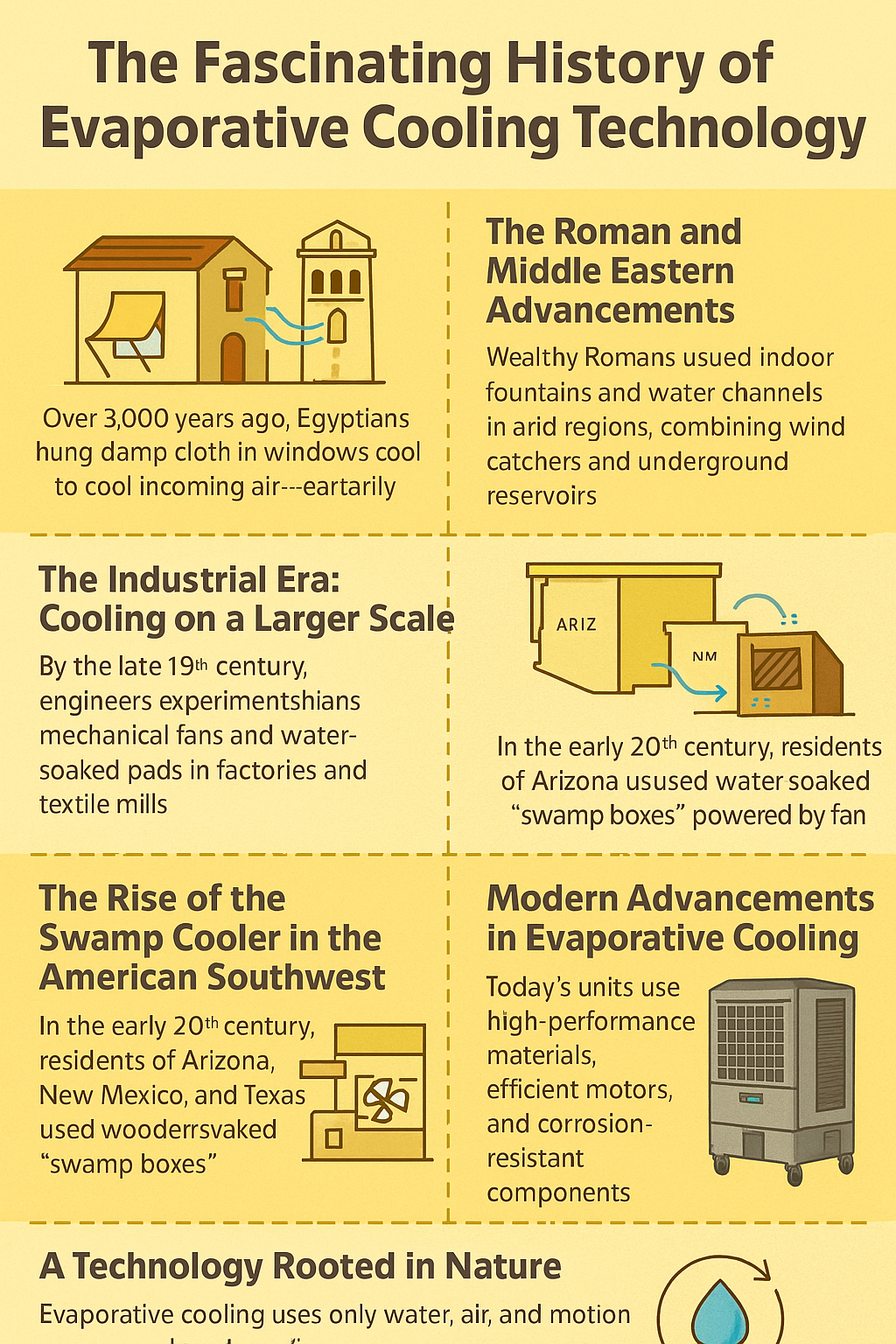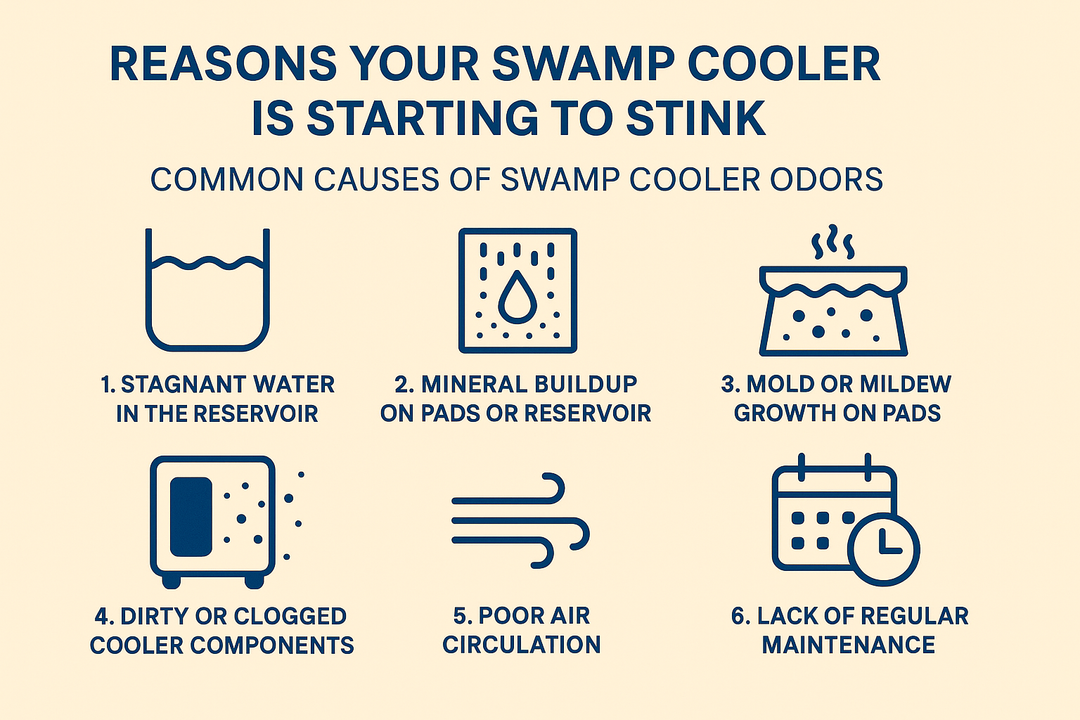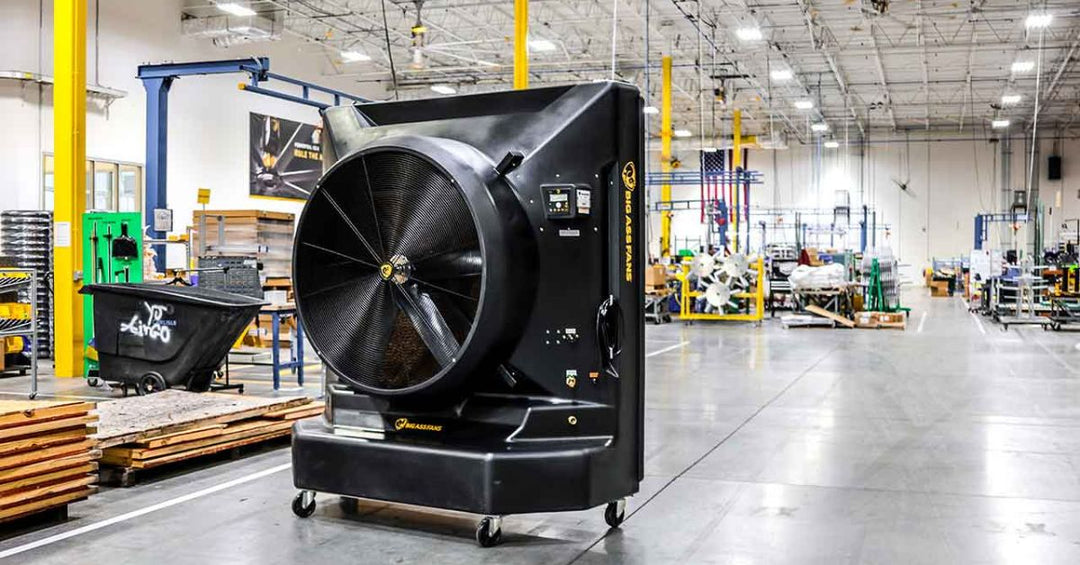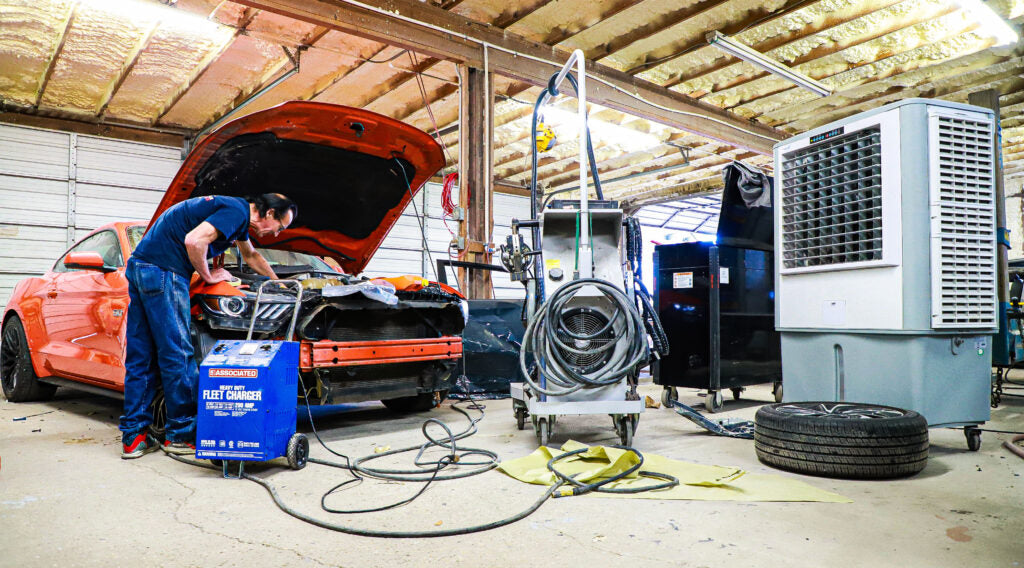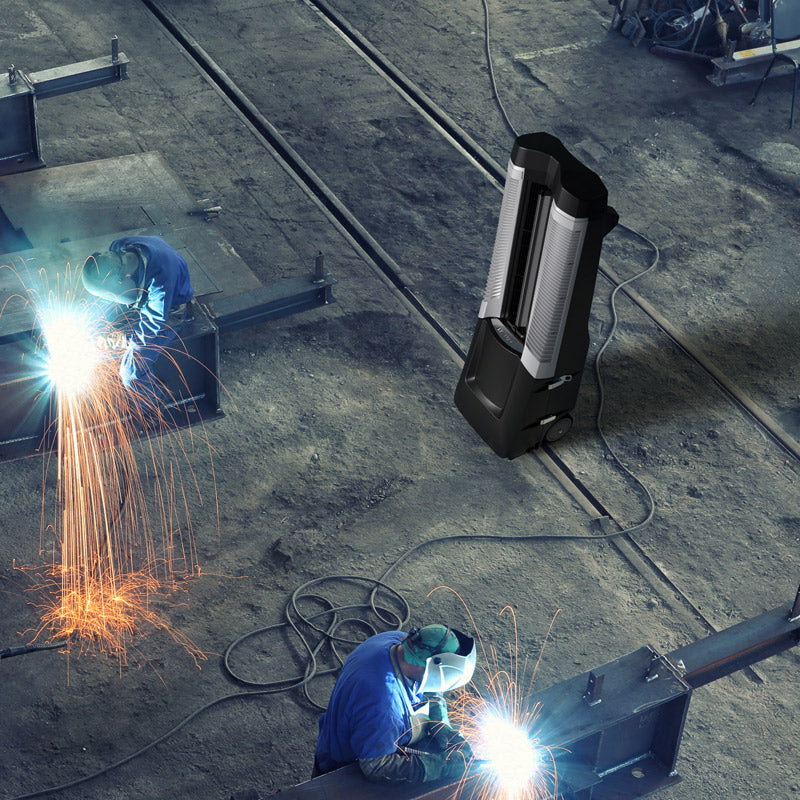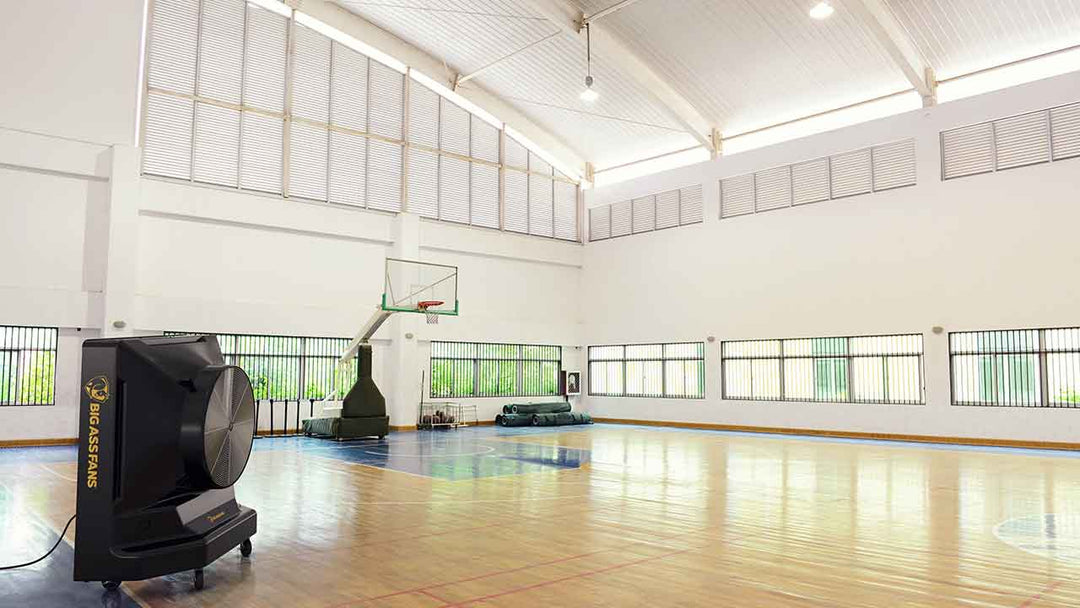The Fascinating History of Evaporative Cooling Technology
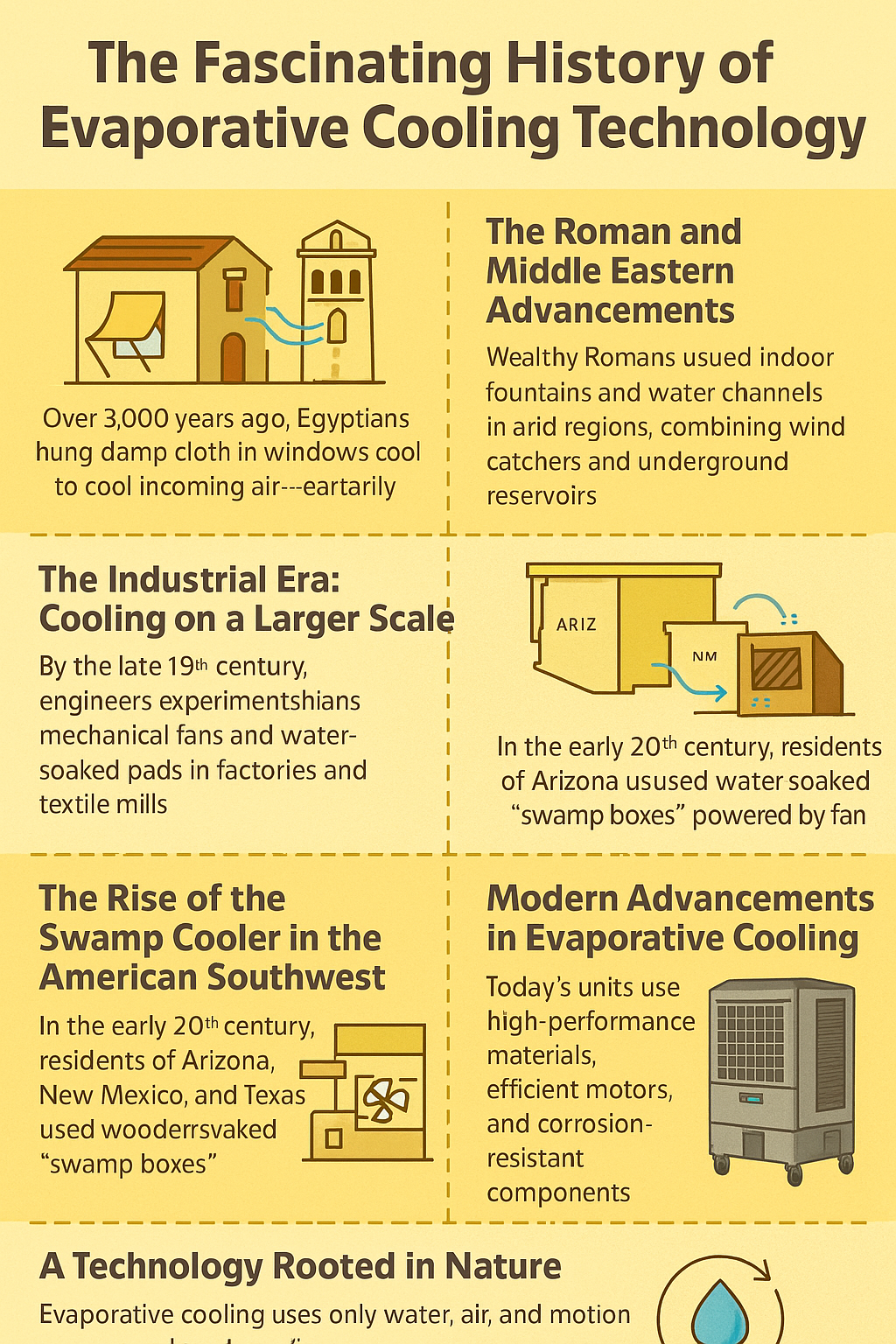
From Ancient Innovation to Modern Comfort
From Ancient Innovation to Modern Comfort
Evaporative cooling is one of the oldest and most natural forms of temperature control known to humankind. Long before electricity and air conditioning, civilizations around the world discovered that air feels cooler when moisture evaporates. Today’s swamp coolers use this same principle, but with modern engineering and durable materials that make them reliable and effective for commercial, industrial, and residential use.
1. Ancient Beginnings: The Egyptians and Persians
The story of evaporative cooling starts over 3,000 years ago in ancient Egypt. Egyptians would hang damp reeds or cloths in windows to catch the desert breeze. As the hot air passed through the wet material, it cooled, creating a noticeable temperature drop indoors — the earliest form of a swamp cooler.
Similarly, ancient Persians engineered “wind catchers,” or badgirs — tall, open structures that captured wind and directed it over pools of water inside homes. This simple yet brilliant design harnessed natural evaporation to make hot, dry environments livable.
2. The Roman and Middle Eastern Advancements
As civilizations advanced, evaporative cooling principles spread through the Roman Empire and across the Middle East. Wealthy Romans built homes with indoor fountains and water channels to maintain cooler air. In arid regions like Iran and Iraq, architects perfected methods of combining wind catchers with underground water reservoirs to create naturally air-conditioned spaces.
3. The Industrial Era: Cooling on a Larger Scale
By the late 19th and early 20th centuries, engineers began experimenting with mechanical fans and water systems to reproduce natural evaporation on a larger scale. Early factories and textile mills used fans blowing across water-soaked pads to keep temperatures down and humidity stable — improving both comfort and product quality.
This era laid the foundation for the modern evaporative cooler, combining ancient wisdom with industrial innovation.
4. The Rise of the Swamp Cooler in the American Southwest
In the early 1900s, evaporative coolers gained popularity in the hot, dry climates of the American Southwest. Residents in Arizona, New Mexico, and Texas relied on “swamp boxes” — simple wooden frames lined with water-soaked burlap pads and powered by electric fans.
Over the years, manufacturers refined the design with metal housings, replaceable pads, and built-in water pumps. This innovation made swamp coolers more durable and easier to maintain, paving the way for today’s modern commercial and industrial models.
5. Modern Advancements in Evaporative Cooling
Today’s evaporative coolers are a far cry from their ancient predecessors. Brands like PortaCool, Big Ass Fans, Cool Boss, Cajun Kooling, and Vector use high-performance materials, efficient motors, and corrosion-resistant components to deliver powerful airflow with minimal energy use.
Features like variable fan speeds, digital controls, and low-maintenance designs have made evaporative coolers ideal for warehouses, workshops, construction sites, gyms, and outdoor spaces. Despite all the innovation, the core principle remains unchanged — cooling air through the natural process of evaporation.
6. A Technology Rooted in Nature
The beauty of evaporative cooling lies in its simplicity. It uses water, air, and motion — nothing more. From ancient Egypt to modern America, this sustainable cooling method continues to provide relief from the heat without relying on chemical refrigerants or high energy consumption.
Conclusion
Evaporative cooling technology has evolved for thousands of years, but its foundation remains remarkably consistent: harnessing nature’s process to stay cool. Whether you’re looking for a modern swamp cooler for your warehouse or a portable model for outdoor use, you’re benefiting from an innovation that’s stood the test of time.
Visit SwampCoolers.com to explore our full collection of evaporative coolers and learn how this time-tested technology continues to deliver reliable cooling for today’s environments.


